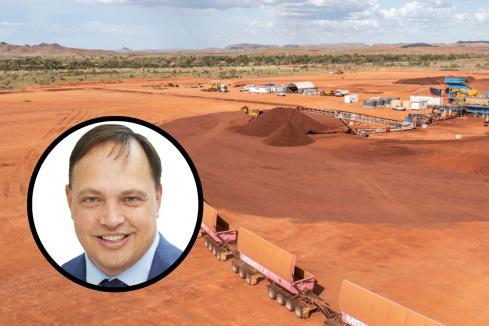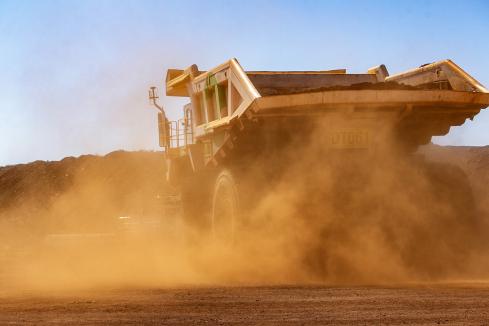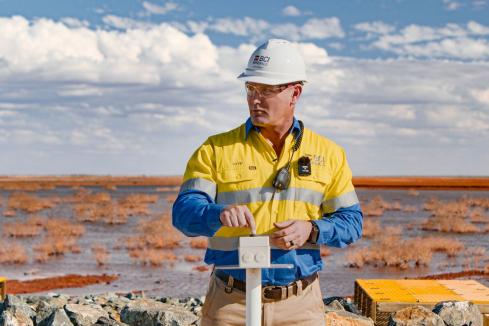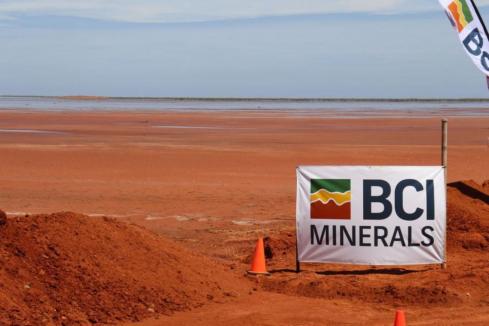With the resources sector in the doldrums, another of Australia’s traditional strengths – agriculture – is standing tall.


With the resources sector in the doldrums, another of Australia’s traditional strengths – agriculture – is standing tall.
If you could buy Western Australia’s three remaining independent iron ore miners – Atlas Iron, BC Iron and Mount Gibson Iron – as a unit they would cost you $325 million; this might sound like a lot, but the same money could also buy a Tasmanian salmon farm or half a cheese factory.
Comparing minerals with food is not something many investors do, but it’s worth the effort; because if mining has entered one of its routine down times, then it might be time to check out what’s happening in the agricultural sector of the stock market.
It’s out there among the salmon farmers, beef producers, cheese makers, and egg producers, as well as the almond and walnut growers that near-boom conditions can be found.
Capilano Honey, for example, last week hit an all-time share-price high of $23.92, up 316 per cent on the low point in the past 12 months of $5.75 and a mind-stretching 9,800 per cent higher than its 24 cents price of two years ago.
What’s driving Capilano is the prospect of Australian honey getting a free ride into the giant Chinese market under the terms of the China-Australia free trade agreement, if/when it is finalised.
The Queensland-based honey producer is not alone in riding the surge of interest in agriculture, which is being propelled by China’s switch from a building boom to an eating binge, and from the rush by other Asian countries to develop a hungry and thirsty middle class.
What started this trip by Bystander through stock-exchange listed agricultural stocks was an exceedingly dry report released last month into Australian agriculture by the Western world’s economic think tank, the Organisation for Economic Cooperation and Development, and a mistaken belief on my part that I would struggle to find many pure agricultural stocks.
For its part, the OECD noted that Australia was well placed to supply food to Asia (hardly an original thought), and that China is on track to have 670 million middle class consumers sometime in the next few decades.
Economists at the Paris-based organisation warned that feeding Asia would not be a simple business, however, because other countries are playing the same game, and some have more productive and efficient farm industries. Then there are the problems of an ageing rural labour force in Australia and a lack of investment in innovation – which is partly a fault of government for cutting back on research.
With the OECD recognising Australia’s potential to significantly boost its export of food – especially non-traditional wheat, beef and lamb – my hunt for investment avenues for local investors started, complete with a prejudicial view that I would not find many.
What a surprise to discover a smorgasbord of agricultural stocks, perhaps not ripe for the picking (because most have been performing strongly over the past two years), but names that nevertheless deserve a mention in most investment portfolios, for three reasons.
• The agriculture theme is undoubtedly a hot one for Australian investors, and it is one that could continue picking up speed.
• The mining boom is over, and the sooner investors stop mourning, the sooner they can recoup their losses.
• Getting up to speed now on agriculture will prepare investors for what is certain to be a splurge of new floats, as soon as investment bankers wake up to what’s happening.
There is a downside to this outbreak of enthusiasm – the capacity of agriculture to disappoint. Anything to do with farming carries a higher degree of risk than most primary industries – if it doesn’t rain the crops don’t grow.
With those warnings, it is fun to construct a notional share portfolio based on interesting things to eat.
• Almond farmer Select Harvest, with a share price up from $5.56 to $13.64, for a market value of $842 million (10 times the current value of Atlas Iron).
• Bega Cheese, which does precisely what its name says, makes cheese. Over the past 12 months, its share price has risen from $3.94 to $4.33, valuing the business at $676 million.
• Salmon farmer Huon Aquaculture, which is up from $3.07 to $3.55 and has a market value of $310 million.
• One of Australia’s oldest companies and with deep roots in wool trading, Elders’ share price has risen this year from $1.62 to $3.91, taking its market value to $327 million.
• Treasury Wine Estates, a once troubled wine producer now on the road to recovery with a share price up from $4.08 to $6.13, and a whopping market value of $4 billion.
• Farm Pride, an egg farmer, with a share price up from 18 cents to 59 cents, yielding a market value of $32 million.
• Freedom Food, a health food maker, up from $2.69 to $3.18, a 12-month high that values the company at $491 million.
Like mining stocks, the ASX-listed food stocks are beneficiaries of Asian demand, and Australia’s declining currency.
Unlike mining stocks, the food sector is heading up.
Unhealthy investment
IF food stocks are not on your investment radar screen, and mining stocks have fallen off altogether, then perhaps you should follow the lead of Sydney University and invest in booze and tobacco.
Wildly unlikely as that might sound, it appears the rush by those responsible for Sydney University’s $1.4 billion portfolio to get away from fossil fuel stocks has led them to redirect funds into cigarettes and alcohol.
From the position of a casual observer the shift is startling, because it seems that fear of carbon-caused global warming with its potential health consequences has been replaced by investment in products guaranteed to cause health problems.
According to one analysis of the university’s investment report, about $2 million was invested over the past 12 months in British American Tobacco and SAB Miller (a beer maker), with a further $3.5 million invested in Diageo, maker of big name booze products such as Johnnie Walker whisky and Smirnoff vodka.
Easy as it might be to understand the thinking behind a no-carbon investment policy, the booze and cigarette investments appear to be saying something else – perhaps a desire for one last puff and quick swig before the end of the earth.


















